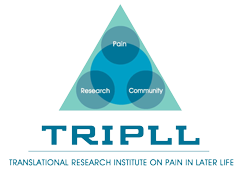Age is one of the most critical factors associated with chronic pain. Compared to their younger counterparts, older adults suffer more from CLBP, seek less care (Knauer, Freburger, & Carey, 2010), and are more susceptible to poor pain outcomes, including disability and mortality (Gagliese, 2009). Older adults face numerous barriers in accessing chronic pain care, such as poor communication with health care providers, transportation problems, and psychosocial limitations (Park, Hirz, Manotas, & Hooyman, 2013). It is established that older adults often fail to receive adequate chronic pain treatment (e.g., Chodosh et al., 2004; McNeill, Sherwood, & Starck, 2004). Harkins (2005) proposed two reasons for this inadequacy: (a) in regards to age, pain is viewed as a secondary symptom of various comorbid conditions, with emphasis placed more on treatment of the pathology versus the pain; (b) pain may be misunderstood as a “normal” feature of aging, thus, ignored by health care providers.
Meredith L Stensland, Sara Sanders; Not So Golden After All: The Complexities of Chronic Low Back Pain in Older Adulthood, The Gerontologist , gnx154, https://doi.org/10.1093/geront/gnx154
Excepted from an article in the Gerontologist. Click here for more information.
